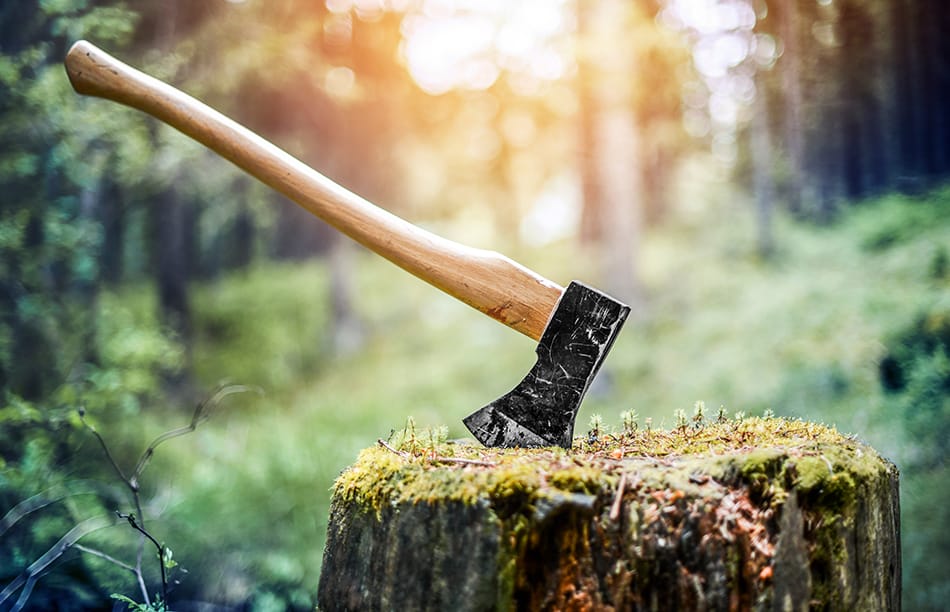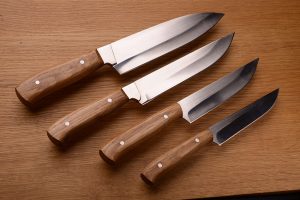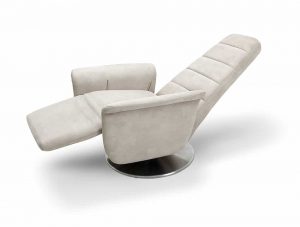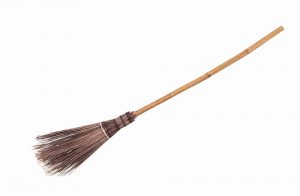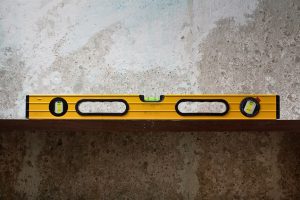無論您是否希望它們為武器或砍木頭,軸是最有用的尖銳之一tools大約。他們令人驚訝地易於使用,因為他們依靠非常直觀的運動來完成工作。當然,這並不意味著斧頭拋出的藝術不是一個充滿技巧的藝術 - 但是讓我們麵對它,普通用戶將依靠更簡單的動作,涉及丟失的手指較少。
Part of this ease relies on the combination of several simple, but well-thought-out elements. Turns out, there is a lot more to axes than just a pole and a sharp stone!
Related:33種不同類型的木材切割工具
In This Article
What Are the Parts of an Ax?

Ax anatomy generally recognizes two main parts: a head made of metal or stone (depending on your century of origin) and a lighter handle, which is usually made of wood. So, where do all these parts come into play? Besides reading the explanation of the ax parts below, you should also check out the diagram above to have a visual look at your ax.
頭部
當你掌握一堆日誌時,你將用頭部擊中它。這頭由六個不同的部分組成,需要與和諧一起工作:
屁股
傳統上,軸頭將具有較厚的鈍側和纖維尖銳的側麵。鈍的側通常被稱為對接,民意調查或背部。然而,這部分不僅僅是邊緣的剩餘:它意味著平衡斧頭的背麵,並有助於任何擺動運動感到自然。
The Bit
軸的鑽頭是其切割部分或邊緣的上側。這部分將用於做大部分切割,雖然斬波將非常感謝屁股的重量。這個邊緣通常在一側彎曲。包括該曲線的模型是特別有用的,因為它們可以將其作為鏟子或撬杆加倍。
The Toe
Unlike what its name implies, the toe is not a protuberance of any sort. In reality, it is the top corner of the bit or the edge. There is no clear demarcation as to where the toe ends or begins. However, it is still useful to keep an eye on this part: whenever you are wielding an ax, you should aim to have the toe as the part that makes the first impact on your target.
The Heel
的一把斧子充當to its toe because it is the bottom part of the ax’s edge. In many models, the edge on the heel-side is slightly narrower than the one on the toe-side. This is meant to help you use the heel for carving or for precise cuts.
胡子
如果您仔細查看AX的頭部,您會注意到位方通常比對接側長。這是因為頭部的底部通常存在略微曲線,這在軸的其餘部分下方形成一個部分。這種輕微的曲線稱為“胡子”,雖然也許你應該稱之為“下巴”。
臉頰
The difference in thickness between the butt and the bit is formed by a progressive incline in between the two. This incline or curve is called the “cheek.” Sometimes, the cheek of an ax doesn’t simply curve inwards, but also to the sides, creating a small shovel in the middle.
The Handle
The handle is the long, wooden club that you will hold onto when using the ax. In basic models that are just meant for wood chopping, the handle can simply be a long, straight pole. However, multi-tool models and throwing axes will often include many extra elements and parts to their handle. These are meant to balance it and help you grip it more accurately.
AX手柄有五個部分:
The eye
This is the very top section of the handle, which is often embedded in its head. Sometimes, in very worn axes, the eye may be visible from the top of the head. If this happens, check for cracks: it could be a sign that your ax is worn out or in dire need of some maintenance.
肩
頭部下方的頭部是一個較厚的直線部分。這有助於在您將握住軸和暴露於任何鈍力的區域之間的區域之間添加一點距離。通過完全直接,本節還可以幫助您在拋出它時瞄準AX - 它將確保沒有曲線妨礙您的吹氣。
腹部
腹部is the main part of the handle. It often begins immediately below the shoulder, and it is slightly curved outwards (towards the bit or edge). When you grip an ax, you will want your top hand to rest on the curve formed by the belly.
Unfortunately, this area also provides another point for structural problems: if the handle is made from cheap wood, you may find the grain will begin to crack around here.
The throat
The throat is a smaller curved section of the handle, which balances the curve provided by the belly. Because of this, it will usually point inwards or towards the ax’s butt. This shorter curve will also point at the right place for your lower, or non-dominant hand.
The knob
最後,旋鈕是手柄底部的小,厚的彎曲凹痕。它遵循與腹部相同的方向。在許多型號中,旋鈕通常以不同的顏色塗漆而不是手柄的其餘部分。
結論
Axes are one of mankind’s oldest tools. This is why their basic construction often looks incredibly simple when in reality, it is often carefully designed to save you effort and muscle soreness. You should get to know all the different parts of your ax before you take it to the field. This will help you identify how to use it more precisely, as well as spot any places where it may get damaged or break.
